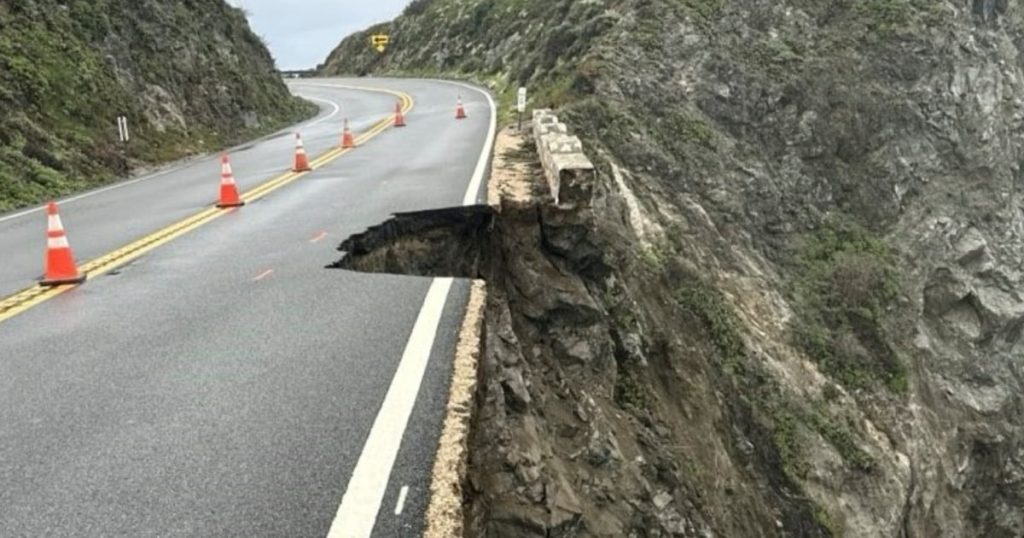Authorities advised motorists to avoid California’s Highway 1 after a section collapsed during a storm, stranding motorists near Big Sur. The collapse occurred near Rocky Creek Bridge, about 17 miles south of Monterey, sending asphalt into the ocean. The highway was closed in both directions, with engineers assessing the damage. Crews determined that travel in the northbound lane was safe, and began escorting motorists around the damaged section in convoys. Some stranded motorists slept in their cars, while others were sheltered at the Big Sur Lodge.
Caltrans spokesperson Kevin Drabinski stated that periodic convoys would continue as crews worked to shore up the highway, which had other closures due to rocks and debris in lanes. The famous route has experienced frequent closures due to collapses, mud flows, and rockslides during severe weather. The storm that caused the collapse dumped heavy rain at lower elevations and over a foot of snow at Sierra Nevada ski resorts near Lake Tahoe. The storm was not an atmospheric river but rather a typical March system, according to National Weather Service meteorologist Ryan Kittell.
The storm moved from the San Francisco Bay Area to Southern California, bringing most of the rainfall to the Los Angeles area. It was expected to linger over Southern California until Sunday night or into Monday, with showers, thunderstorms, lightning, and damaging winds possible in parts of Santa Barbara, Ventura, and L.A. counties. Authorities were working on a plan to evacuate motorists from the area and urged people to avoid the Highway 1 section near Big Sur. The closure and collapse occurred amid heavy rain, leading to safety concerns and stranded vehicles along the scenic route on the central coast of California.
Around 300 cars were waiting to travel northbound when the first convoy was led through the area by officials. The state Department of Transportation, or Caltrans, announced the closure of Highway 1 and the assessment of damage near Rocky Creek Bridge. The closure of the southbound side of the two-lane road forced Caltrans crews to work on a plan to safely evacuate motorists from the area. In addition to the collapse near Big Sur, the highway had other closures due to rocks and debris in lanes, further complicating travel for those in the region.
Despite the storm exiting the San Francisco Bay Area, it brought heavy rainfall to Southern California, with the potential for more rain, thunderstorms, and strong winds in parts of the region. The storm was not classified as an atmospheric river, unlike many other storms that have hit the state in recent winters. Authorities and transportation officials were closely monitoring the situation and working to ensure the safety of motorists and residents in the affected areas. As the storm continued to impact Southern California, crews worked to assess and repair the damage to Highway 1 and clear debris from the roadway to allow for safe travel once again.


